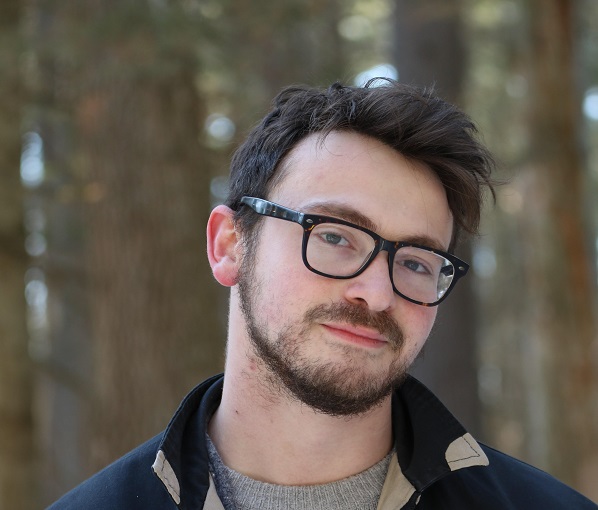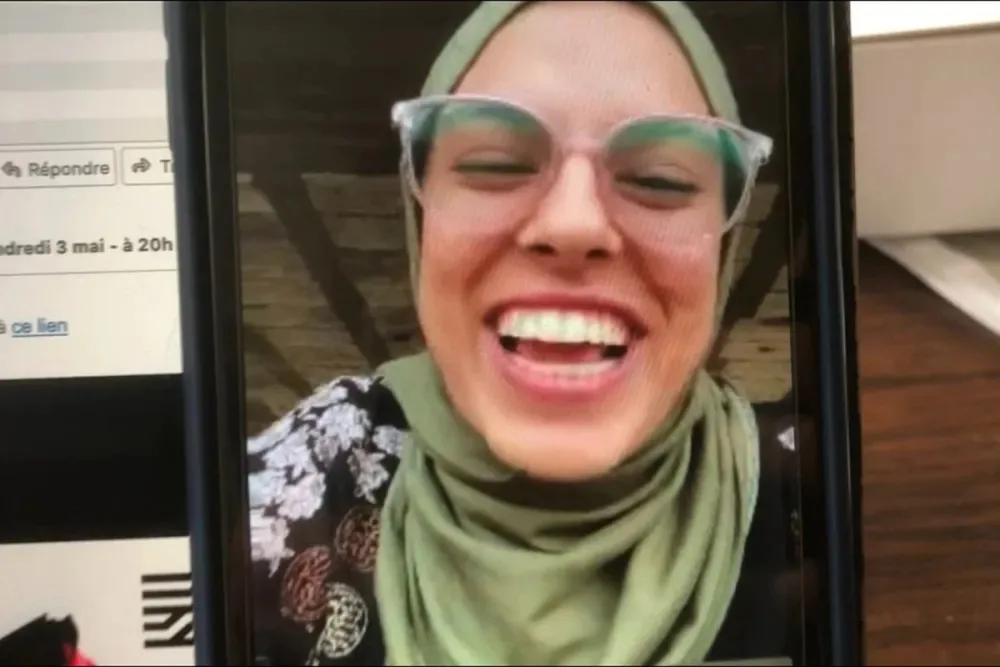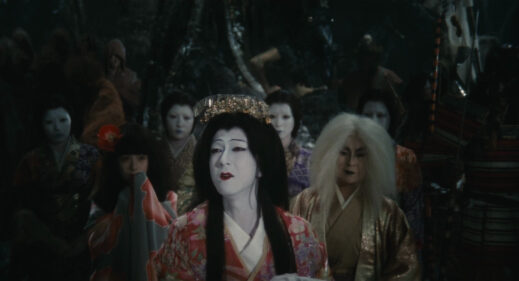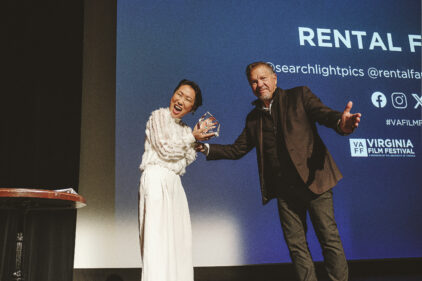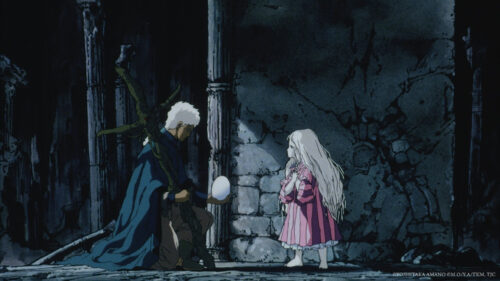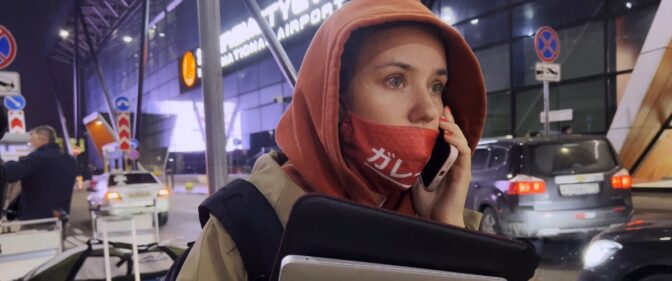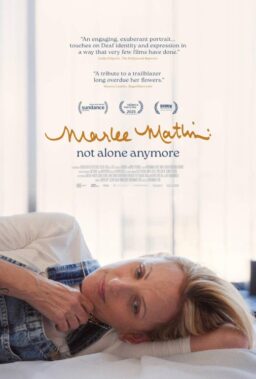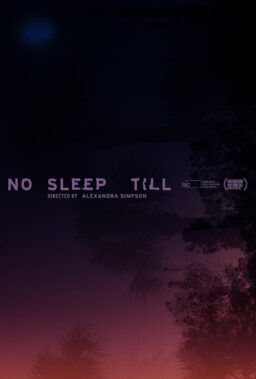In past years, Cannes has often prided itself on not making overt political statements. But the wars waging in Gaza and Ukraine were felt powerfully throughout this edition—particularly given the tragic context of “Put Your Soul on Your Hand and Walk,” made by Iranian director Sepideh Farsi and premiered in the independent ACID sidebar, which rarely makes headlines but screened what was undoubtedly the most important film of this year’s festival.
Fatima Hassouna, a 25-year-old photojournalist and poet living in Gaza, dedicated her life to documenting civilian life under bombardment by the Israeli military, often exposing the impact of forced displacement on Palestinian children. Her images of life and death in Gaza were known internationally, depicting not only devastation but also dignity, glimmers of joy alongside horror. In one of her photographs, a man has set up a stall of colorful children’s toys that stand out all the more against heaps of gray concrete and twisted rebar; in another, a woman sits in the ruins of what was once her family home, smiling radiantly.
Farsi’s film, which takes shape through a series of extended video conversations from April 2024 to April 2025, allows audiences to see through Hassouna’s eyes, observing not only the wreckage of Gaza but also the resilience of the Palestinian people she captured so beautifully. Its Cannes premiere should have been a moment of triumph. Instead, it was a memorial. On April 16, the Israeli military murdered Hassouna and ten of her family members—including her pregnant sister—in their beds, specifically targeting her family’s residential second-floor apartment with precision-guided missiles. Hassouna was assassinated just hours after it was publicly announced that her film would screen at Cannes, adding her name to the more than 200 journalists Israel has deliberately killed since its genocide in Gaza first began.
Confronted with such hopeless circumstances, it’s especially heart-wrenching to watch “Put Your Soul on Your Hand and Walk” and see Hassouna’s vibrant spirit, her ebullient smile, and unwavering optimism up on the screen. Even through a swamp of distorted sounds and pixels, given Hassouna’s unreliable internet connection, her conversations with Farsi make clear the lust for life that informed the photojournalist’s passion for documenting life as she observed it each day. And they form a tremendously moving portrait of resistance under siege.
With Apache helicopters and drones overhead, dropping bombs near enough that she can whip her camera around and catch a wall of smoke billowing from where a building had stood moments earlier, Hassouna keeps smiling. In addition to sharing photography, she shows Farsi her Arabic poems and songs, recounting small anecdotes from her life—some heartening, others heartbreaking—that gradually make visible the defiance that lines her radical positivity. The title of the film refers to how she describes finding the courage to leave her home and step outside, despite her knowledge that death could come at any moment. “Whatever they do to us—trying to destroy us, or even if they kill us—we will be laughing and living our lives, whether they want it or not,” she tells Farsi at one point; this hard-won hope is what drives her as she assures the filmmaker, “They can’t defeat us.”
Farsi got her start photographing political protests in Iran before being forced into exile; she seems to intuitively grasp the unfathomable nature of her subjects’ daily circumstances, asking questions that guide their conversations as often toward beauty as bloodshed. When Hassouna speaks of her deceased grandmother, Farsi asks if she ever sang her lullabies.
The movie’s unconventional visual approach, which finds the director holding up one smartphone to record another, makes it impossible to forget the barriers separating this filmmaker from her subject. But even as dropped signals and out-of-focus framings can be a source of frustration, this approach does serve a purpose: It deepens our appreciation for the bond that Farsi and Hassouna forged across great distances and reflects the empathy that can still be harnessed between our ever-present screens.
No less than Juliette Binoche, overseeing the main-competition jury, used the festival’s opening ceremony to honor Hassouna and frame Farsi’s documentary as Cannes’ raison d’être, the film that most distills the festival’s purpose in modern times. “In every region in the world, artists are fighting every day and making an art of this resistance,” Binoche proclaimed, reading excerpts from a poem by Hassouna: “‘My death went through me / the bullet of the assailant went through me / and I became an angel / in the eyes of a city / immense, bigger than my dreams / bigger than this city. / I became a saintly poet in the eyes of a forest / making myself a hermit / and taking a cypress as an offering.”
The day before, an open letter, “In Cannes, the horror of Gaza must not be silenced,” had been published by more than 350 globally recognized film figures. It was addressed “for Fatima.” It emerges through Farsi’s film that Hassouna knew death was a possibility; she once declared on social media that, were she to die, she wanted “a loud death,” one heard around the world. At Cannes, at least, her name—and this film—became a rallying cry, not only for empathy but also for collective action. “Fatima should have been among us tonight,” Binoche said on stage. “Art remains. It’s the powerful testimony of our lives.”
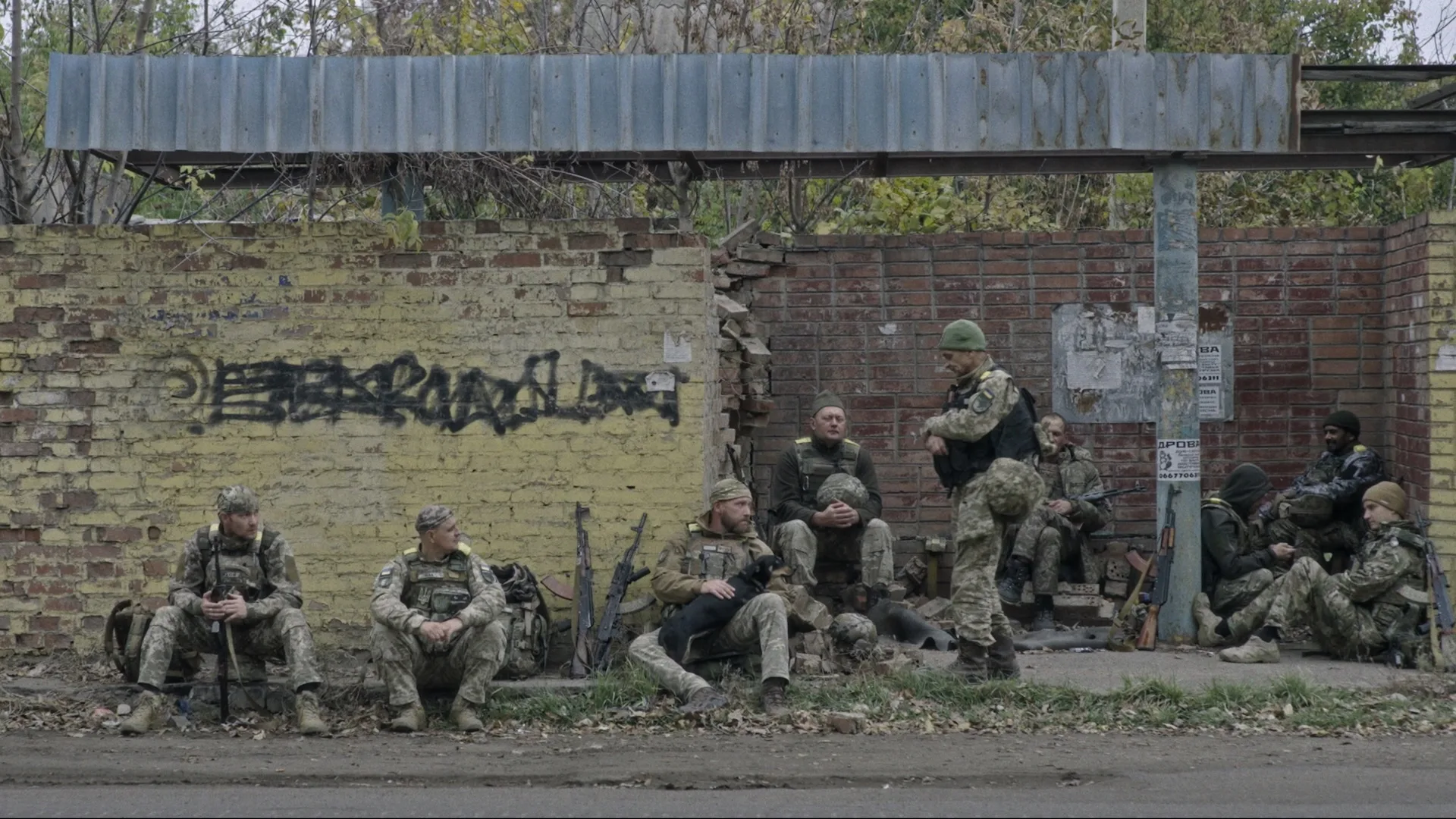
Though the only documentary screened in the Directors’ Fortnight section, “Militantropos” was far from the only Ukrainian title at Cannes. Two weeks ago, on the day of the festival’s opening ceremony, organizers screened three films for Ukraine— biographical portrait “Zelensky,” a film from the fronts of Pokrovsk and Sumy titled “Notre Guerre,” and “2000 Meters to Andriivka,” an account of Russia’s war in eastern Ukraine from the director of Oscar-winning “20 Days in Mariupol”—in recognition of artists, authors, and journalists still documenting the conflict at its three-year mark.
“Militantropos,” however, stands apart from those war-time dispatches, studying the human face of conflict through its haunting and poetic examination of Ukraine—its beleaguered people, its war-torn landscape, and the national spirit enduring between them—after the Russian invasion.
The film’s title, derived from the Latin for “soldier” and the Greek for “human,” refers to “a persona adopted by humans when entering a state of war.” It’s a neologism coined by the filmmakers—Yelizaveta Smith, Alina Gorlova, and Simon Mozgovyi, together known as Tabor Collective—for a specific purpose: to further their film’s psychological immersion into the inner fractures of self and society that this war’s existential stakes and punishing realities have made inevitable.
Not featuring much by way of voice-over or text overlays, the film editorializes through evocative shot choices and editing rhythms, as well as title cards that add philosophical mass (“Militantropos face death as a reality of their own non-existence,” reads one). The Tabor Collective’s film consists of visually striking tableaux that collectively capture the ingrained, unremarked-upon presence of the conflict in everyday life.
A farmer tills his fields, avoiding an artillery shell partially submerged in the dirt. In city streets, bombed-out military vehicles are dismantled and graffitied over, as passerby leave their mark on the weapons that once leveled their homes and infrastructure. Though often heavily delayed, trains move along their tracks, like blood pumping through the city’s veins, as soldiers head to the frontlines or see their loved ones off to safety.
The innocence of Ukraine’s lost generation, born into the brutality of war, is one of the film’s frequent subjects. Pink cherry blossom trees flower above dug-out trenches that children have transformed into a playground; climbing in and around the fortifications, they chant, “There’s no one equal to the Cossacks who march for freedom!” Two elders separately sing a traditional Ukrainian folk song, before one of them recalls her grandchildren and momentarily tears up. “When we see each other after the war, we will sing together,” she resolves. Elsewhere, three boys stand guard on the side of the road as trucks pass; as one waves a flag that seems twice his size, another runs around brandishing an assault rifle, looking uncertain.
Following not only soldiers training for battle but also evacuees, children, and others carrying on with their daily tasks despite the near-constant sound of bombs exploding and heavy artillery firing in the background, “Militantropos” comes to a close with various couples in each other’s arms, some of whom are soon to be separated by the war effort, all of whom face an uncertain future. Continually, this mesmerizing film evokes the strange, liminal existence of a society at war, questioning what it would mean to truly live, rather than just survive, amid its ravages.
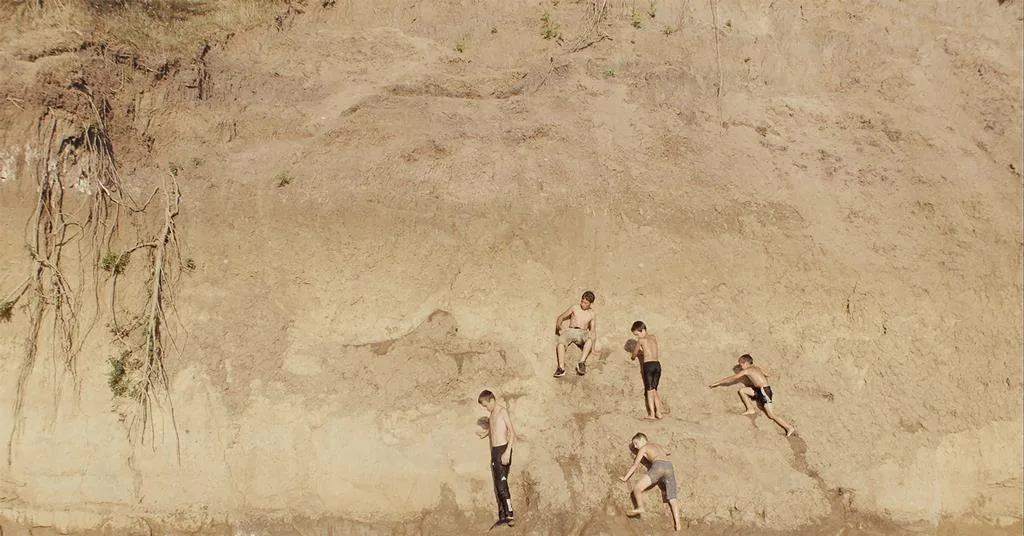
Déni Oumar Pitsaev’s “Imago,” which won both the French Touch of the Jury prize from Cannes’ Critics’ Week sidebar and the festival’s L’Oeil d’or prize for best documentary, is similarly poised between the personal and the political, examining the psychology of exile through its delicate, quietly observant self-portrait of a Chechen-born filmmaker’s return to a Georgian valley where his family members found refuge from two wars raging across the Chechen border.
Pitsaev was forced to flee his war-torn homeland as a child, ending up a naturalized French citizen. Upon learning his mother has gifted him a plot of land in Pankisi, a remote Chechen enclave in the foothills of the Caucasus, he returns there to reconnect with his roots, despite the pressure of expectations—those both of his mother and the family he meets, including his long-lost father—that Pitsaev will settle down, build a house, find a wife, and start a family, finally becoming in their eyes “a Chechen man.”
And yet Pitsaev isn’t the person his parents expect him to be, at least not exclusively; displaced from the motherland, his sense of self has been inflected with loss and complicated by the time he spent living away. Even as he attempts to adjust to life in Pankisi, encountering local men and women who reflect on their relationship to ideas of individual ambition and communal belonging, Pitsaev becomes increasingly conscious of how profoundly his identity has diverged from his ancestry, how dissimilar his threshold of freedom is to theirs. The question of where he might find happiness in his adult life is clearly important to Pitsaev, but conversations with locals lead him toward only a more nuanced understanding of the ways traditional and religious structures in the village also impose a kind of stricture on its inhabitants.
Even once he resolves to build a house for himself in the valley and excitedly shows his family members a blueprint for its modern A-frame design, their mortified reactions make it clear that any type of break with tradition would essentially alienate him from everyone living in the region. Particularly in conversations with Pitsaev’s father, who remarried and had two sons after the filmmaker and his mother moved away, it becomes apparent there’s a distance between them that can never be undone. Walking through the forest at one point, the two come a little closer to a shared acknowledgment of the fracture in their family, but nothing could be said momentous enough to enable a more permanent reconciliation.
There’s a simple, poignant honesty to “Imago.” Across two soothing, if perhaps excessively sedate, hours that lighten Pitsaev’s grappling with familial issues by luxuriating in the valley’s natural idyll, its wooded peaks, and alpine pastures, the documentary ruminates on that central question of homecoming. In the end, it concludes, this filmmaker’s desire to belong is rooted nowhere more deeply than in his struggle toward self-acceptance.
